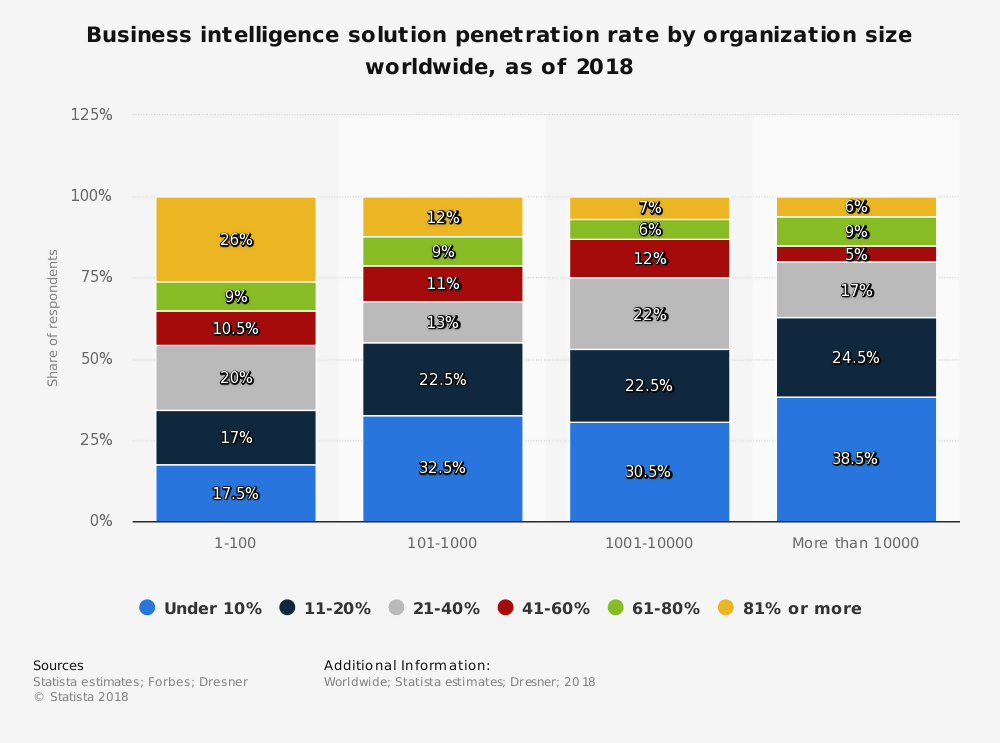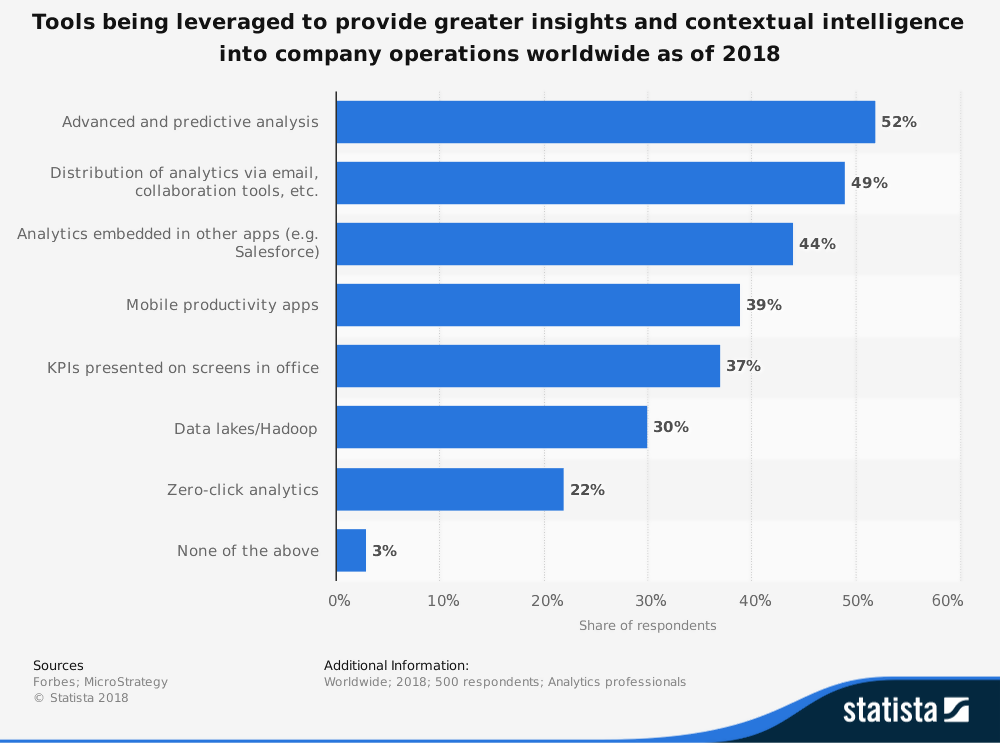Business Intelligence refers to a collection of operations and process that use technologies to convert raw data into meaningful information that drives the business towards profitable actions.
Business intelligence constitutes of various tools and applications through which raw data is collected from in-house systems other sources. The data from these sources are analyzed, and a piece of precise intelligent information is made available for users in various forms like reports, summary, charts, maps or graph depending on the user need. Business Intelligence helps in synthesizing data from various sources and presenting it in a format that is easily consumable for business decision makers to drive growth strategies.
Business Intelligence helps creating business strategies in the form of right data, right people at the right time. It might sound like a simple statement but it involves a mix of IT systems, technologies, data collection and data analysis.
Business intelligence has had a profound impact on the Key Performance Indicators that organizations across the world have. A survey found that 60% of managers from organizations across the world stated that the use of BI helps in improving the efficiency of the organization. While Return on Equity is double in companies that use BI capabilities than those who do not.
Figure-1 shows us that businesses with more than 10000 employees are the most likely to adopt business intelligence solutions, which probably explains why it is important for organizations in growth. Organizations with 100 or less employee have a 26% of companies that have adopted BI solutions, which shows that size necessarily does not matter when comes to adopting BI solutions.

Though we can see analytics lead the way in providing intelligence and business growth strategies, KPIs presented on screens also hold high importance for management who gain insights on worker productivity.
Some of the trends in the field of BI, which has driven business growth over the years are
Collaborative BI: BI software is combined with tools like social media and other current technologies, which improves the work and sharing it among the teams results in better decision making
Embedded BI: This allows the combination of the BI with other applications for enhancing the reports
Cloud Analytics: The BI tools are going to be offered on the cloud and over time, many of the businesses will be gearing up for this technology.

The above statistic shows that the size of the global business intelligence and analytics software market from 2015 to 2022. In 2018, the business intelligence and analytics market were valued at around 12.8 billion U.S. dollars worldwide, which shows the growth in consumption of these solutions that foster business growth.
Need help setting up business intelligence? Contact us for a free consultation.
